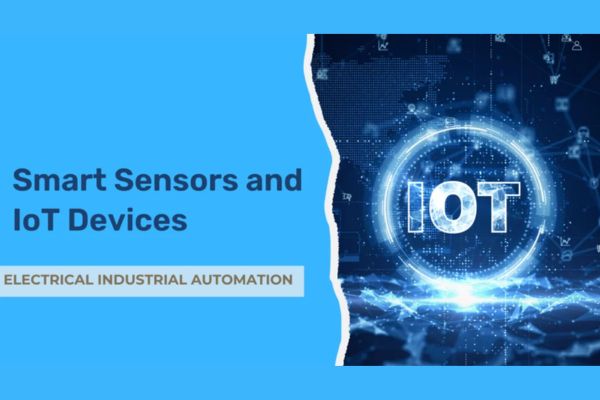Wireless IoT sensors are playing a pivotal role in enhancing industrial automation including accuracy, efficiency, and productivity. The addition of these sensors to factory machinery and their incorporation into industrial automation systems has resulted in on-the-spot and off-site data collection, remote monitoring, and secure communication between machines and systems. According to the Consegic Business Intelligence report, the Wireless IoT Sensors Market is estimated to reach over USD 70.36 Billion by 2031 from a value of USD 8.23 Billion in 2022 and is projected to grow by USD 10.20 Billion in 2023 growing at a CAGR of 27.30% from 2023 to 2031. Migrating towards higher device networking is a makeover of how industries are functioning. It catapults forth breakthrough solutions for predictive maintenance, process remodeling, and operational safety.
Real-Time Monitoring and Data Collection
One of the key advantages of wireless IoT sensors in industrial automation is their ability to collect and transmit data in real-time. For instance, machinery and machines are relational, these sensors, which are part of that technology, continue to deliver information such as temperature, pressure, vibration, and humidity. Complete monitoring in real-time offered by these sensors is the first step to prevent the failures thus, operators are able to find irregularities and inefficiencies that cause them early. Thus, they are able to avoid downtimes which will cause costly repair work. For example, real-time data is the most important thing for the optimal operation of the manufacturing sector, the energy sector, and the logistics sector. Wireless IoT sensors, no longer for humans to manually inspect, are allowing operators to remotely supervise the systems, thereby keeping operational efficiencies at a higher level and reducing the likelihood of human-made errors. Moreover, the capability of collecting the most precise real-time data helps industries to make data-driven decisions which, consequently, provides them better productivity.
Enabling Predictive Maintenance
About traditional industrial systems, the usual practice is to maintain it according to the reactivity of each piece of equipment. The introduction of wireless sensors into the IoT has caused a transition to predictive maintenance. Thanks to this technology, engineers, operators, and maintenance personnel can identify potential problems before they develop into accidents. The latter constantly supervises the health of the equipment by discovering the signs of wear. It is their task to inform the maintenance personnel when the machines need to be repaired. When equipment failures are detected at an early stage such a proactive approach helps in overcoming unplanned downtimes, thus, extending the service life of the equipment and reducing maintenance costs. No matter what, the failure of machines is a risk in industries like aerospace, oil, and gas, and automotive manufacturing, resulting in severe financial losses and safety hazards. Besides, IoT sensors play a significant role in predictive maintenance that comprises it as a core application. Resource optimization and capex spending control are the main advantages.
Wireless Flexibility and Scalability
Wireless IoT sensors are different from traditional wired systems when it comes to their features such as flexibility and scalability. In this way, they can be seamlessly and speedily convinced in difficult-to-access or hazardous places, locations where running cables might not be realistic or safe. This is why the use of IoT sensors is beneficial for these industries: mining, oil exploration, and remote manufacturing plants. The need to pile up physical infrastructure is one of the hazards faced when dealing with such areas, such as mines, oil exploration, and manufacturing plants that are situated remotely.
Additionally, wireless sensors enable scalable solutions, which means that industries can use them to add or reconfigure sensors without the need for extensive retrofitting. Through the integration of new technologies into the system, they can be as such as standardized operations while providing monitoring capabilities for new plants, equipment, or environments. The possibility to expand the system this way without the need to buy new sensors is a great turning point as the sector of IoT is getting ready for a slurry of connectivity-to-automation trends.
Enhanced Process Optimization
Wireless IoT sensors that offer real-time information on machine efficiency and environmental surroundings are the building blocks for industrial process optimization. Data transferred from these sensors can be traded into complex analytics platforms. That’s where machine learning algorithms can uncover inefficiencies, set the optimal production schedules, and propose possible actions for the company to grow. In a machinery production situation, for instance, internet of Things gadgets might disclose that some equipment regularly runs under instance environmental conditions like humidity or temperature. By changing operational parameters as per this data set, we can observe a substantial increase in energy efficiency. In sectors like food processing, chemicals, and pharmaceuticals, ensuring appropriate conditions in the environment is very significant for product quality and human safety. The wireless sensors are set up to monitor these measurements continuously and are programmed to instantly make corrections to guarantee the compliance of the necessary specifications and normal running of the systems.
Conclusion
Wireless IoT sensors have become a major factor in the factory automation process as they allow for monitoring in real-time and can be used for predictive maintenance with optimization of operations achieved. Their flexibility and the capability to grow with the production levels of the industries enable companies to align this IoT network into existing operations. Furthermore, it will not only improve operational safety but also decrease the time when production is stopped. As technology and automation create a greater level of industrial connectivity, wireless IoT sensors will continue to be the core of the smart industrial transformation, making operations more intelligent, efficient, and safer.













